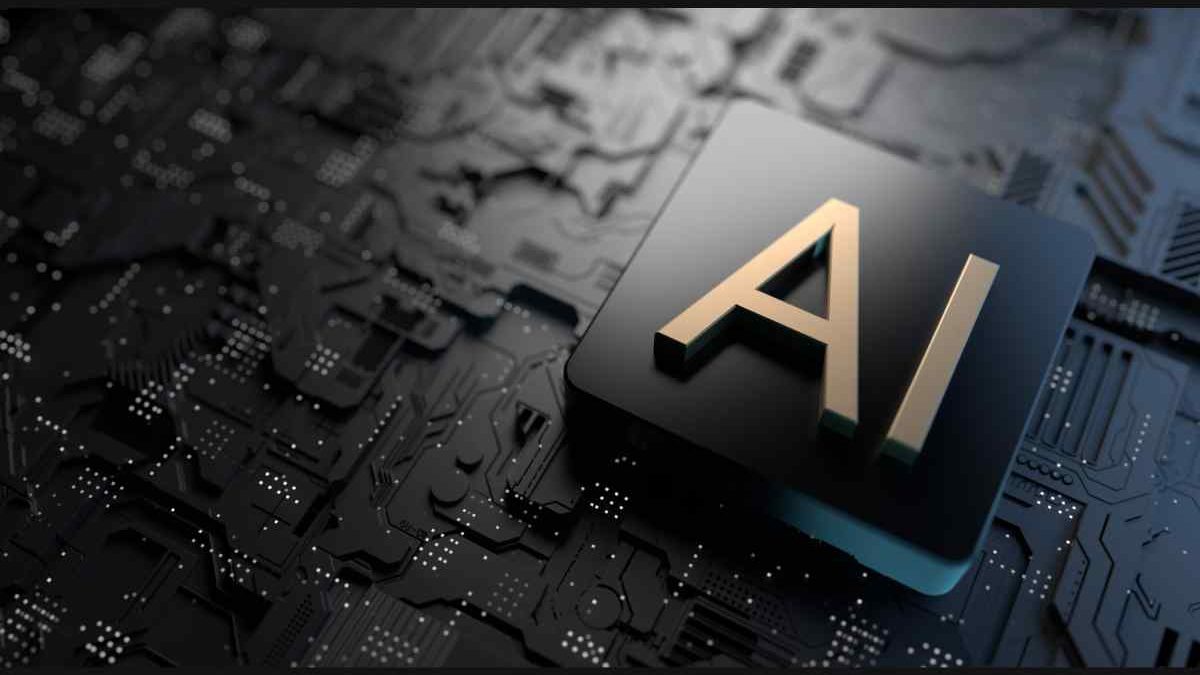How Neural Networks are Accelerating Research and Innovation
Table of Contents
Introduction
We’re standing at the threshold of a revolution where AI is reshaping the landscape of scientific discovery.
Imagine a world where the process of trial and error in research is significantly reduced, thanks to the predictive capabilities of neural networks. This isn’t just a dream; it’s becoming a reality with the transformative outcomes of AI technology in scientific research.
Have you ever wondered how AI manages to churn through massive datasets to find patterns that are invisible to the human eye?
It’s all about the hidden layers of deep learning, where artificial neurons work together to decipher complex information. It’s a bit like unlocking a treasure chest of knowledge, one layer at a time.
As we move forward, consider the impact on scientists and researchers. AI doesn’t just assist; it transforms research environments, enhancing literacy and training. It’s a partnership where human creativity meets machine precision, leading to unprecedented levels of innovation.
With AI, we’re not just observing the universe; we’re beginning to understand it in ways we never thought possible.
So, what does this mean for you? It means that the future of science is not just about discoveries but about the accelerated pace at which we’ll reach them.
Are you ready to be part of this exciting journey?
Revolutionizing Research with Neural Networks
Have you ever wondered how Artificial Intelligence (AI) and Neural Networks are transforming the landscape of Scientific Discovery?
It’s all about harnessing the immense power of data and computing. The growth in AI is fueled by the exponential increase in computational power, which enables researchers to process and analyze vast datasets like never before.
Consider the field of Research and Innovation, where AI is not just a tool but a game-changer. The development of generative AI, for instance, has significantly increased the demand for both training data and computational infrastructure.
AI operates through software powered by computational systems that can be deployed rapidly and at scale, revolutionizing how we approach complex problems.
Innovation now isn’t just about having the right ideas; it’s about having the right tools to execute them. AI and machine learning (ML) are the tools that provide the digital transformation that’s driving progress worldwide.
As we move to the next section, ask yourself: How can the power of AI and ML be further leveraged to unlock new possibilities in scientific research?
Let’s move on to a more applicable approach to this method!
Applications in Protein Folding and Drug Discovery
Imagine sifting through the vastness of genetic data, looking for that one alteration that could unlock new therapies. That’s exactly what AI is doing in fields like genomics.
With databases like the Human Genome Project, AI algorithms are a game-changer, identifying genetic modifications and paving the way for novel treatments. These algorithms are not just tools; they’re revolutionizing how we approach biological complexity. It’s all about pattern recognition. AI excels at finding patterns that humans might miss.
For instance, a recent breakthrough in antibiotic discovery was made possible by AI’s ability to analyze structural classes of compounds. This isn’t just about faster results; it’s about finding solutions we might never have discovered otherwise.
AI’s impact on drug discovery is profound, with computational biology and artificial intelligence playing pivotal roles in designing new drugs.
The synergy between AI and human expertise is crafting pathways to innovations that were once thought impossible.
Let’s take a quick look at some breakthroughs:
| Year | Discovery |
| 2022 | AI identified a new class of antibiotics |
| 2023 | AI-driven design of modified organisms |
As we transition to the next section, consider how AI is not just a tool but a partner in the scientific quest. It’s about collaboration—combining the intuition and creativity of scientists with the precision and speed of machines.
Ready to see how this partnership plays out in material science?
Designing New Materials with AI
AI isn’t just imagining a world of incredible materials – it’s actively building it! Material science is experiencing an unprecedented boom in discoveries thanks to the power of AI.
AI-driven labs, like the AIA-Lab, are now autonomously synthesizing inorganic powders, leveraging historical data and machine learning to plan and interpret experiments. This isn’t just a glimpse into the future; it’s happening as we speak.
Have you ever wondered how AI can predict the best new material for a specific use?
It’s all about data and algorithms. For instance, SES AI Corporation’s collaboration with Worcester Polytechnic Institute is pushing the boundaries of Lithium-Metal battery technology.
Similarly, quantum simulation technology is revolutionizing energy research by simulating the quantum properties of nanomaterials, enabling breakthroughs in energy and materials research.
Also, consider the vast potential AI holds not just on Earth but also in unraveling the mysteries of the cosmos and addressing climate change.
Are you ready to see how AI is not just reshaping our world but also helping us understand the universe? Let’s dive in.
AI’s Expanding Role: From Cosmos to Climate
Have you ever wondered how scientists sift through the vastness of space to find Earth-like exoplanets? AI is making this search more efficient than ever. With machine learning, researchers can now characterize exoplanets in large astronomy datasets with remarkable accuracy.
For instance, a neural network model recently outperformed traditional methods for detecting exoplanets within noisy time series data.
But it’s not just about finding new worlds; AI is also enhancing our understanding of the cosmos in other ways.
Take gravitational waves, for example. Einstein first predicted these ripples in spacetime, and now, AI algorithms are trained to pick up their subtle signals in the data from the Laser Interferometer Gravitational-Wave Observatory.
In fields overflowing with data, like astronomy and high-energy physics, AI doesn’t just work harder; it works smarter. It identifies patterns at scale and speed, enabling the discovery of phenomena that might otherwise go unnoticed.
Here’s a snapshot of AI’s impact on space exploration:
- Machine Learning for Exoplanet Detection: Improved accuracy in noisy datasets.
- Gravitational Wave Discovery: AI algorithms assist in identifying signals.
- High-Energy Physics: AI systems pinpoint patterns for further analysis.
So, as we transition to the next section, consider how this partnership between human curiosity and machine intelligence is not just reshaping our view of the stars but also paving the way for advancements here on Earth.
The Human-Machine Partnership: Collaboration for Future Progress
Forget incremental improvements – the fusion of human ingenuity and AI precision is poised to revolutionize research! This powerful partnership goes beyond efficiency, unlocking new levels of creative exploration.
With AI handling the grunt work, researchers can focus on the big picture, making leaps in innovation that were once thought impossible.
For instance, AI can sift through massive datasets in minutes, a task that would take humans years to complete. This synergy is not without its challenges, though. As AI becomes more integrated into our workflows, there’s a concern about deskilling—will researchers become too reliant on AI, losing their edge?
But it’s not all negative. The rise of AI in research environments also presents an opportunity for upskilling. Imagine becoming an AI innovator in your field, harnessing the power of AI to push boundaries and discover new horizons. The key is to strike a balance, ensuring that AI complements rather than replaces human expertise.
Here’s a snapshot of how AI is impacting researchers:
- AI assists with tedious tasks, freeing up time for creative thinking.
- There’s a need for a theory of human-AI co-creativity informed by psychological sciences.
- Public-private partnerships can lead to unbalanced recognition but also drive innovation.
In the dance of discovery, AI is the partner that never tires, providing the rhythm for human creativity to flourish.
As we look to the future, the question remains: How can we best harness the strengths of both humans and AI to accelerate scientific discovery?
The answer lies in fostering a culture of collaboration, where each complements the other and together, they create a symphony of innovation.
Conclusion
As we’ve journeyed through the transformative landscape of AI in scientific discovery, it’s clear that neural networks are not just tools but catalysts for a new era of research and innovation.
From unfolding the complexities of protein folding to pioneering new materials, AI’s influence spans the vast expanse from the cosmos to our changing climate. Yet, as we embrace this digital renaissance, we must navigate the delicate balance between the boundless potential of AI and the integrity of scientific inquiry.
The discussions around AI’s role in science—its reliability, reproducibility, and transparency—are as critical as the breakthroughs themselves. As we stand on the cusp of unprecedented discoveries, the synergy between human intellect and machine intelligence promises a future where the pursuit of knowledge is not only accelerated but also enriched with diverse perspectives and ethical considerations.
The road ahead is one of collaborative exploration, where AI serves as both the compass and the companion in our quest to understand and improve the world around us.
Frequently Asked Questions
How is AI transforming scientific research?
AI is transforming scientific research by analyzing vast datasets, identifying patterns, improving the accuracy of predictions, and accelerating innovation. Neural networks and other AI tools are enabling researchers to tackle complex problems in areas such as drug discovery, material science, and climate modeling, leading to transformative outcomes across various scientific disciplines.
What are some key applications of AI in science?
Key applications of AI in science include protein folding prediction, drug discovery, material design, climate forecasting, and astronomical data analysis. AI helps automate hypothesis generation, explore hypothesis spaces, and conduct unbiased searches for explanations, thus facilitating a deeper understanding of complex phenomena.
What are the ethical considerations regarding AI in scientific research?
Ethical considerations of AI in scientific research involve ensuring the integrity and reproducibility of scientific findings, addressing potential biases in AI models, and maintaining transparency in AI-driven decision-making. It is crucial to develop guidelines for the ethical use of AI and to consider its impact on the roles of human researchers and the diversity of scientific viewpoints.
Author Bio:
By Vikramsinh Ghatge, Director of Marketing & Business Development at TechDogs.
A seasoned Marketing and Business Development professional with a knack for transforming digital landscapes. Currently steering the helm at TechDogs.com, I’ve been instrumental in catapulting the brand into a globally recognized digital technology publisher. My forte lies in crafting comprehensive marketing strategies that encompass everything from content marketing to performance marketing. I’m passionate about leveraging data to make informed decisions, which has been key in optimizing ad monetization and diversifying revenue streams.
Before TechDogs, I honed my skills at Anibrain Digital Technologies and The Predictive Index, where I led high-performing teams and orchestrated marketing campaigns and business development that significantly increased client acquisition and retention. My leadership style is rooted in mentorship and collaboration, fostering environments where innovation thrives. Whether it’s breaking new ground in digital advertising or pioneering innovative approaches to grow organic traffic, I thrive on challenges and look forward to opportunities where I can make a significant impact. Let’s connect if you’re interested in discussing marketing strategies, digital transformation, or potential collaborations.


